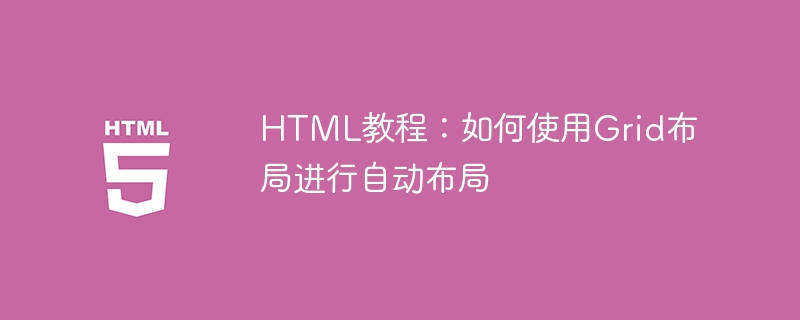

HTML tutorial: How to use Grid layout for automatic layout
In web design, page layout plays a vital role. A good layout can make a webpage look neat and beautiful and improve user experience. In the past, we usually used traditional floating layout or elastic layout to implement page layout, but with the development of technology, new layout methods have emerged as the times require.
Among them, Grid layout is a powerful and flexible layout method that uses grid (grid) form to build web page layout. Using Grid layout, we can achieve automatic alignment, even distribution and adaptive effects, thus greatly simplifying the page layout work.
This article will take you through the basic concepts and usage of Grid layout, and help you better master this layout technology through specific code examples.
.container { display: grid; }
.container { display: grid; grid-template-columns: 1fr 1fr 1fr; grid-template-rows: 100px 200px 300px; }
The above code defines a grid with 3 columns and 3 rows. The width of each column is 1fr, and the height of each row is 100px, 200px and 300px respectively.
.item { display: grid-item; grid-column: 1 / 3; grid-row: 2 / 4; }
The above code places an element in the grid from column 1 to column 2, and occupies the position from row 2 to row 3.
.container { display: grid; grid-template-columns: 1fr 1fr; grid-auto-flow: row; }
The above code automatically layouts the grid items in the rows of the grid, displaying two grid items in each row.
.container { display: grid; grid-template-columns: 1fr 1fr; @media (max-width: 768px) { grid-template-columns: 1fr; } }
The above code defines a grid template with only one column when the screen width is less than 768px.
Summary:
Grid layout is a powerful and flexible layout method that can help us implement web page layout more easily. Through the basic concepts and specific code examples introduced in this article, I believe you already have a preliminary understanding of Grid layout. I hope this article can help you further master this layout technology and improve your web design capabilities. Start using Grid layout to make your page layout simpler and more beautiful!
The above is the detailed content of HTML Tutorial: How to Use Grid Layout for Auto Layout. For more information, please follow other related articles on the PHP Chinese website!